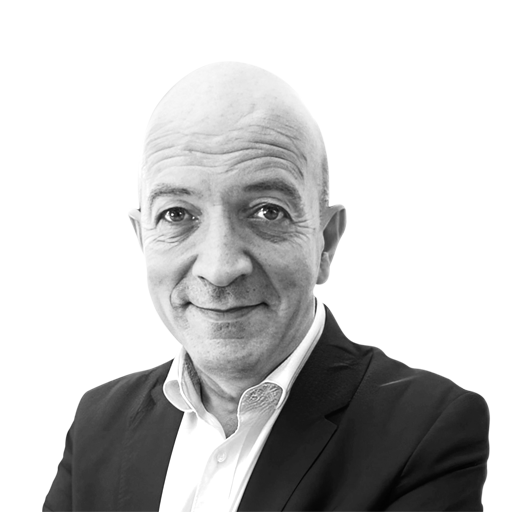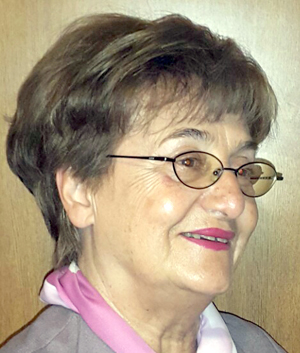Artificial intelligence ate my cheese

In 1998, Spencer Johnson published “Who moved in my cheese?”, A fable about how we deal with the change. Four characters live in a maze: two mice, Sniff and Scurry, and two men, Hem and Haw who go to Post C every day, where they find their cheese, a metaphor for what they want in life: stability, success and safety.
One day, however, the cheese disappears. Sniff, who already gave signs of change, and Scurry, always ready to act, set out in search of a new post. Hem refuses to accept the loss, feels wronged, angry, and expects everything to return to normal. Haw, with fear and resistance, hesitates… Until he realizes that continuing stopping will not bring back what is already. And that’s when he ventures alone through the maze, facing his fears and manages to reach the N Post, where he finds a new cheese and finds that Sniff and Scurry have been there for some time.
Twenty -seven years later, this metaphor remains current as the cheese we are guaranteed in our lives is not just disappearing, it is being transformed, dematerialized and resized by artificial intelligence. But this time the AI went further than previous disruptions, not just changing the cheese site, but redesigning the maze itself and the rules of the game while it is still running.
In fact, AI is changing entire structures: reconfigure professions, devalues specialized technical languages, automates complex decisions, and questions competences that until yesterday they seemed exclusively human. For many, this is deeply disconcerting. When we hear “my profession requires human sensitivity” or “a machine will never do what I do,” we hear clear hem echoes at the C Poston abandoned, waiting for family cheese to return as if by magic.
This resistance, however, is not simply irrational, it is deeply human since our identity is intertwined with what we do and how we do it. Abrupt changes threaten this fundamental symbolic balance. Hem is not just the absence of cheese, he fears the irreversible loss of his place in the world, and this explains the paralysis that many feel in the face of technological transformations that they do not understand and did not ask.
Fortunately, there are also Haws, people who, despite the initial fear, begin to walk. Jason Allen won an art contest in the US in 2022 with an AI -generated work and turned the controversy into a business opportunity. While Hollywood arguments protested against technology, independent creators found how to use AI to amplify their creativity, generating thumbnails, optimizing content and exploring new forms of artistic expression.
And finally we have the Sniffs and the Surrys, the most pragmatic. While sniffs feel before others where the wind of change blows, the scurrys run, tests, and seek to adjust quickly. Each character represents a distinct attitude towards the transformation: Hem resists and blocks, Haw hesitates but gradually learns, Sniff anticipates risks and opportunities, Scurry acts immediately. No approach is perfect, but consciously recognizing these different figures within us can be the first step in guiding ourselves more clearly in this new technological maze.
But in fact, not everyone can improvise the same facility in the face of this transformation. For many, AI is a kind of free jazz where the notes change constantly, the chords are not repeatedly repeated, and not everyone has trained to keep up with the rapid pace. And those who do not have access to tools or proper training quickly fails to play. Digital exclusion thus becomes inevitably, social exclusion, silent but devastatingly effective.
Still, the practical benefits are tangible and transformative. In various areas, from medicine to justice, AI -applied with responsibility begins to show a real impact: detects illnesses earlier, personalizes teaching, optimizing harvests, and releases professionals from repetitive tasks. When well used, not only save time but can concretely improve our quality of life.
But it also raises genuinely serious ethical and practical challenges. AI models consume energy on a large scale and are often trained with data collected without explicit consent of users or protected by other rights. They can amplify existing social prejudices or reinforce structural inequalities in a completely invisible way to end users, and can promote a ubiquitous vigilance model, but often opaque in their operations. Technology itself is never neutral because it depends on how, and especially by whom it is directed and implemented.
And it is precisely here that the geopolitical dimension of this transformation comes in. We watched three distinct approaches in the new global maze: the United States behaves like Scurrys, running rapidly behind innovation without major regulatory obstacles, prioritizing speed and technological domain. China follows a mixed strategy of Sniff and Scurry, anticipating strategic trends while massively investing and rigorously controls AI development. Already the European Union takes the role of Haw: hesitates and reflects carefully about ethical risks, but risks staying behind in the race for technological leadership.
And Portugal, as a country, cannot continue indefinitely on Hem’s passive role, hoping that transformations will be favorable by chance. We urgently need more sniffs in public systems, people capable of anticipating trends and preparing appropriate answers. We need dynamic Surrys in companies, willing to experience and innovate quickly. And we especially need reflective Haws on political and social decision makers, leaders who actively learn as they do, who accept uncertainty but act with purpose.
There are concrete and practical ways of constructively acting: requiring algorithmic transparency of technological platforms, including critical digital literacy in school curricula, supporting responsible and ethical scientific investigation, actively involving citizens in public debate on digital future, regular with balance with innovation and protection, with European ambition and national adequacy. More than running blindly behind the next technological advance, it is important to decide with democratic clarity where (and especially why) we are collectively driving.
Deep down, the question is no longer « who moved my cheese? », But « what kind of cheese do we want to exist – and who decides that? » Perhaps the answer is not in finding the n, but to realize that we are the one who draws the maze. Because, after all, true cheese has never been a position or competence, but the freedom to choose who we want to be. And this freedom, that is, remains stubbornly ours.




/s3/static.nrc.nl/images/gn4/stripped/data132852687-3c5e5d.jpg)

